After a hiatus that lasted nearly sixty years, the elegant and revolutionary art of Alexander Archipenko (Oleksandr Porfyrovič Archipenko; Kiev, 1887 - New York, 1964) returns to Italy, told through signs, symbols and images by the Milan gallery Matteo Lampertico. The place is strategic: in fact, it was in Milan that the Kiev artist held his last solo show in 1963 at Galleria San Fedele, immediately after the retrospective at Palazzo Barberini in Rome, and then died in 1964. It is a circle that closes, a void that returns to matter, as is often the case in Alexander Archipenko’s graphic and iconographic universe.
The great strength of this exhibition is already announced in its title: Archipenko in Italy not only brings back the focus on the artist after many years of silence, but is also the result of a careful reconnaissance of the exchanges and influences that Archipenko established with some key figures of the avant-garde currents of the 20th century. This is why the clean and elegant layout alternates in a well-balanced way between a nucleus of works by Alexander Archipenko(eleven in total including paintings, drawings, sculptures and sculpture-paintings) and some pieces by Italian artists of the same period. The catalog is edited by Maria Elena Versari, art historian and professor at Carnegie Mellon University. This is not a random choice, in light of the fact that it was Versari who first identified the deep traces of Archipenko’s poetics in the visual language of Metaphysics, and especially in the works of Carlo Carrà and Giorgio De Chirico. New York-based Archipenko Foundation and the artist’s wife Frances Archipenko Gray contributed to the catalog.

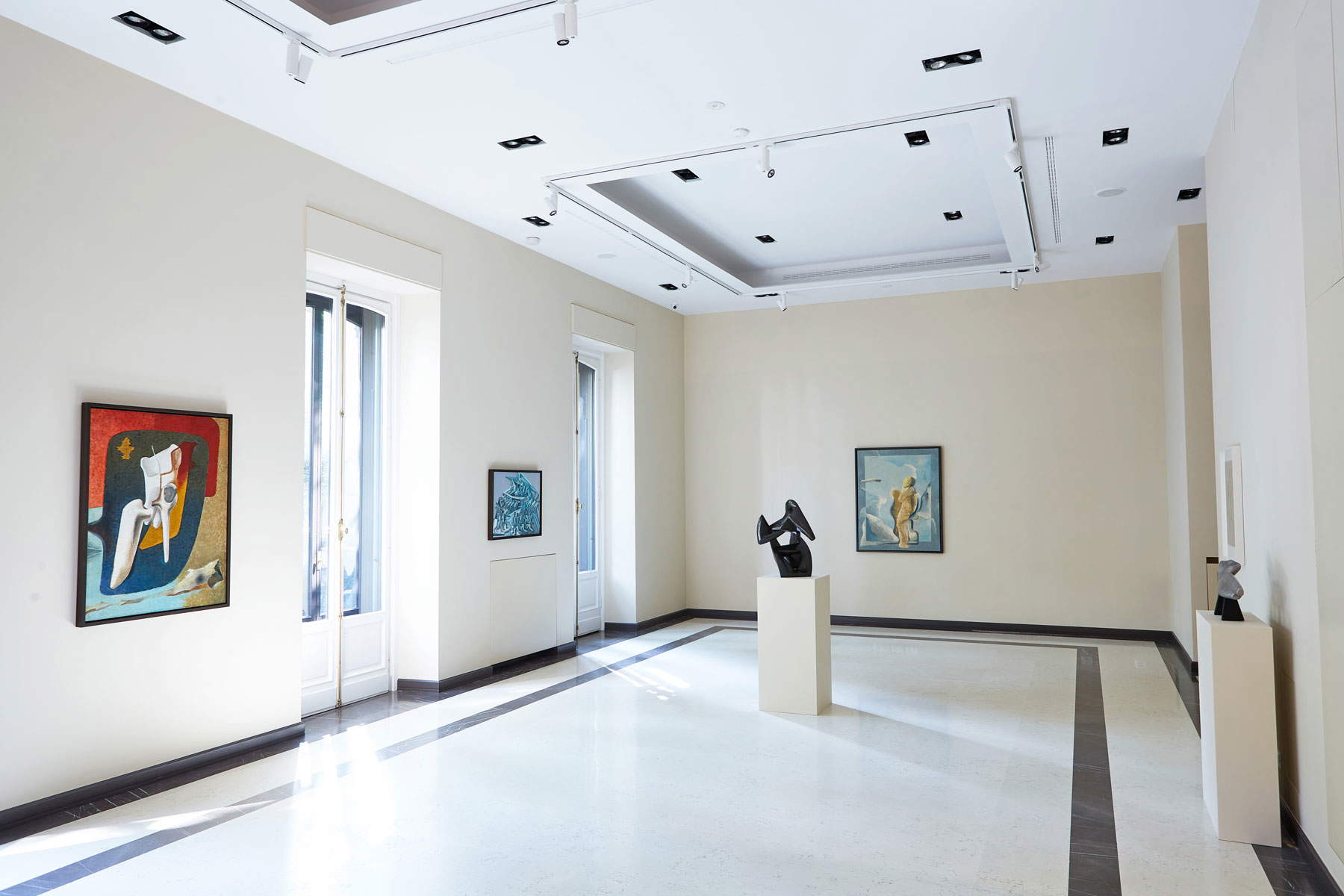
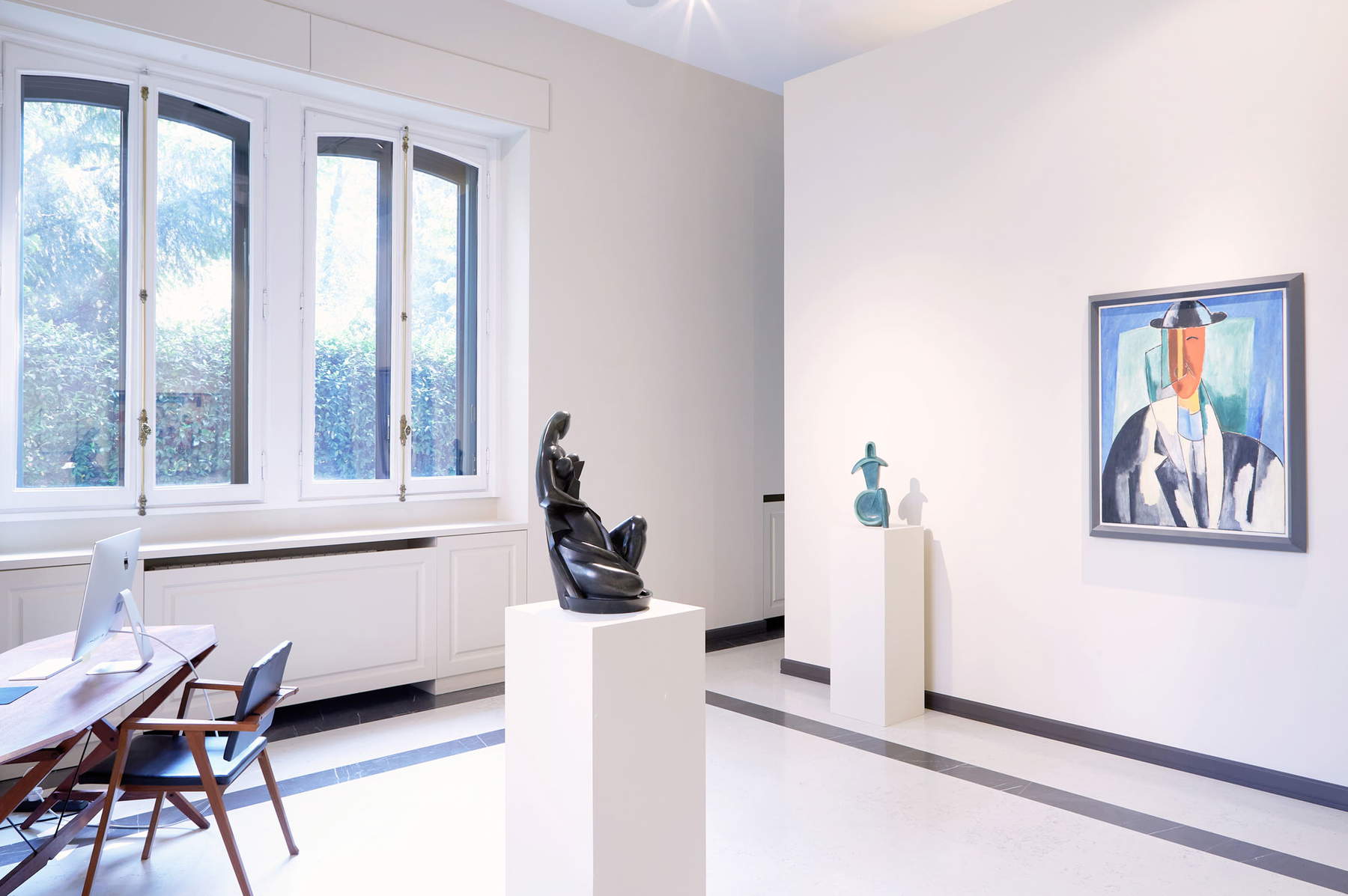
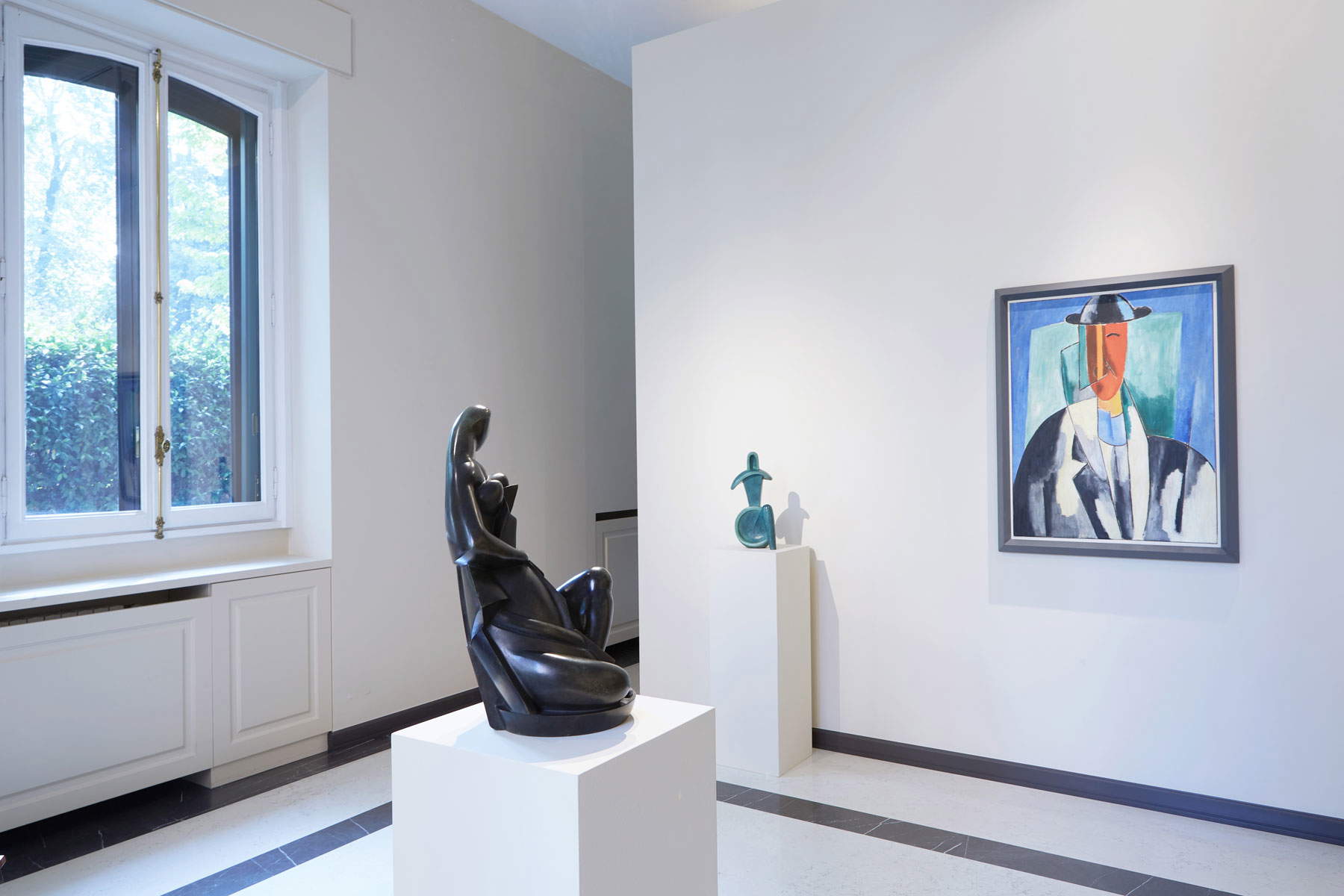
Around the central core of Archipenko’s works is a refined exhibition itinerary that includes Carlo Carrà, Fortunato Depero, Enrico Prampolini, Fillia, and Alberto Magnelli. The exhibition thus becomes part of a larger narrative that finds space in the catalog thanks to archival images, historical publications and references to the social and cultural context in which the Kiev artist lived and worked in France and then Italy. His first impact with the European art scene was precisely in Paris, where Archipenko moved as a young man in 1908 and was immediately attracted to the research of Cézanne, Picasso and Léger, from whom he learned the basic principles of Cubism. The sculptures of this phase already present elements that testify to intense exchanges with Boccioni, whom he met thanks to Gino Severini, and with the Futurists of the Parisian scene: theharmony between voids and solids, between concave and convex surfaces, between straight and oblique lines, a totally innovative way of conceiving the human figure, dynamic because it is caught in several simultaneous views. A perfect example is the work Draped woman (conceived 1911/1957, realized 1968), a masterpiece that would profoundly influence Boccioni in his research on dynamism applied to sculpture.
Next in the exhibition we find two works belonging to the Scultopictures series, an invention that Archipenko developed around 1912 in the wake of a growing interest in the two-dimensional plane of painting. Scultopictures are sculptural works made of assembled materials and supported by a rigid wooden background: a kind of very modern, multi-material high relief in a Cubist key. The specimens exhibited here are from different periods: Figure was probably produced in the 1950s and takes up the study of the sculpture-paintings of the 1910s. And then Standing woman and still-life of 1919, which hides a little secret: the grid of white dots at the bottom is inspired by a manner of the 1910s much loved by Picasso, Severini and Survage.
The Scultopicture series goes through endless experimentation with colors and materials, from wood to bone, from tin to bronze, from plaster to terracotta, and on to glass. Metal becomes thought, form, matter and representation in the works of the last few years: look at the very light solidoma body generated by a shiny tin ribbon in Shape on a Blue Background (conceived 1913, realized 1962), or lose yourself in the very delicate Torso in Space (conceived 1935-36/46) as classical and harmonious as Titian and Monet’s Venuses.
![Alexander Archipenko, Draped woman (1911-1957 [1968]; bronzo, 55,9 x 31,8 x 32,4 cm)
Alexander Archipenko, Draped woman (1911-1957 [1968]; bronzo, 55,9 x 31,8 x 32,4 cm)](https://cdn.finestresullarte.info/rivista/immagini/2021/1768/alexander-archipenko-draped-woman.jpg
)
![Alexander Archipenko, Boxers (1913-1914 [1964]; bronzo, 59,7 x 41,9 x 40,6 cm)
Alexander Archipenko, Boxers (1913-1914 [1964]; bronzo, 59,7 x 41,9 x 40,6 cm)](https://cdn.finestresullarte.info/rivista/immagini/2021/1768/alexander-archipenko-pugili-1969.jpg
)
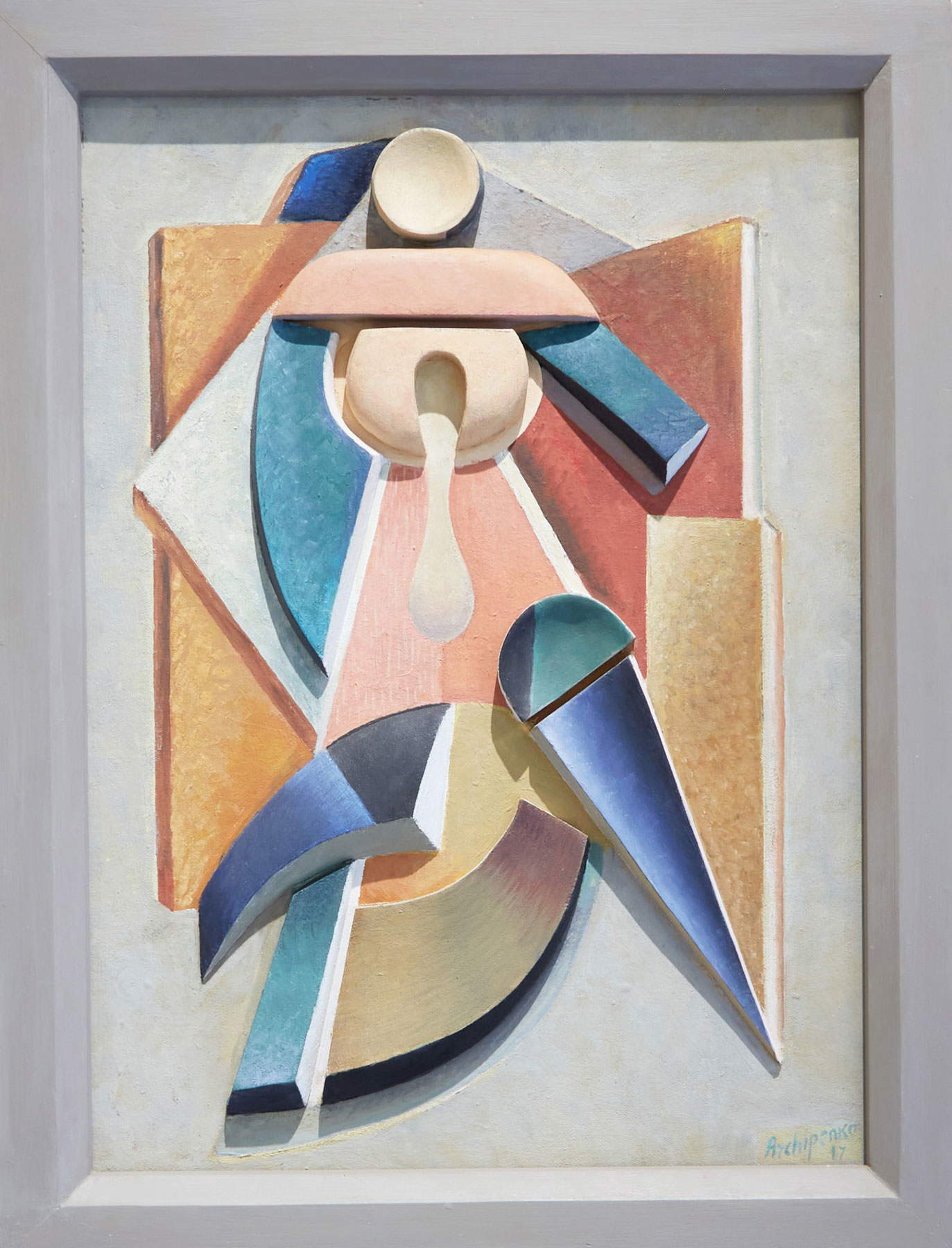
![Alexander Archipenko, Seated figure (1913-1954 [1970]; bronzo, 46 x 19,2 x 13,7 cm)
Alexander Archipenko, Seated figure (1913-1954 [1970]; bronzo, 46 x 19,2 x 13,7 cm)](https://cdn.finestresullarte.info/rivista/immagini/2021/1768/alexander-archipenko-figura-seduta.jpg
)

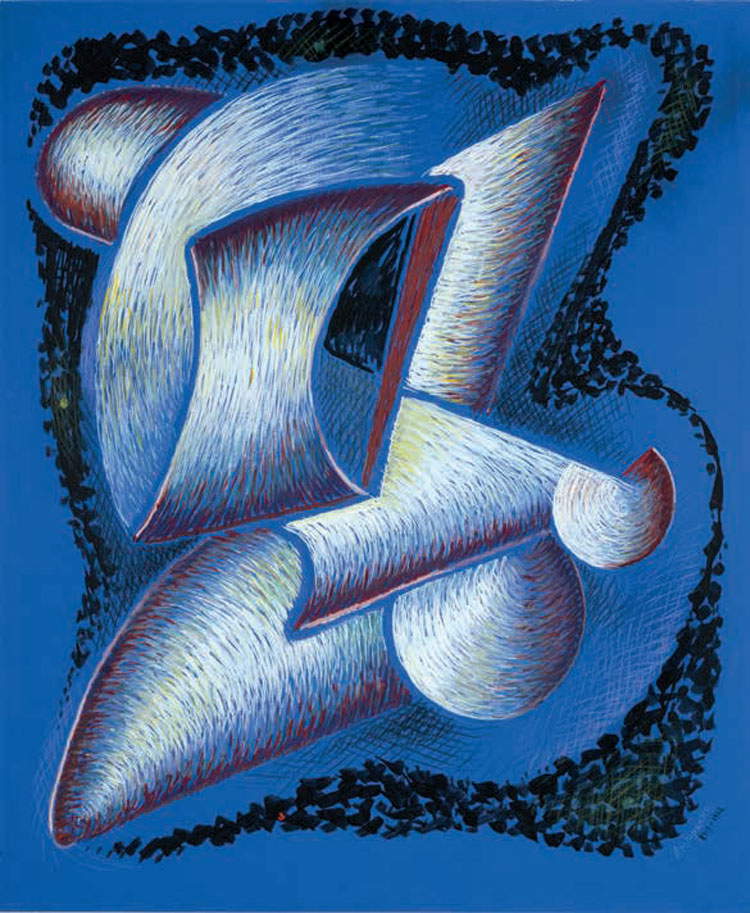
![Alexander Archipenko, Torso nello spazio (1935-1936/46 [1958]; alluminio, 27,9 x 56,5 x 14,6 cm)
Alexander Archipenko, Torso nello spazio (1935-1936/46 [1958]; alluminio, 27,9 x 56,5 x 14,6 cm)](https://cdn.finestresullarte.info/rivista/immagini/2021/1768/alexander-archipenko-torso-nello-spazio.jpg
)
And speaking of the body, here is one element in Archipenko’s productive history that remains stable and unchanged over time, beyond his experiments with medium and material: a deep feeling for the human figure and the physicality of the body. Whether caught in tense or mechanical poses(Walking man, c. 1914-1955), exaggerated in its motility(Dancing, 1912; Movement, 1913; Boxers, conceived 1913-14), or celebrated in its paradigms of life(Draped woman, 1911).
The exhibition could not miss a contribution by Alberto Magnelli (here in fact is his Man in a Hat, 1914), if we think that it was Magnelli himself who spread the name of Alexander Archipenko in Italy, buying en bloc some of his works exhibited at the 1914 Salon des Indépéndents for his uncle’s collection. Archipenko’s spread had a shocking impact on Italian schools, and in particular on Giorgio De Chirico and Carlo Carrà proponents of metaphysical poetics: in the following years the former will bring to fruition the metamorphosis of the man-burkin in the famous subjects of the mannequin and the “Disquieting Muses,” and in parallel Carrà will convert that inhuman mechanicism into sensual femininity(Penelope, 1917).
Finally, the presence of the second-generation Futurists in the exhibition is linked to the 1920 Venice Biennale, where Archipenko held a spectacular solo exhibition of 87 works that literally shocked Italian critics for its daring experiments. After the Metaphysical parable, by the 1920s the art scene in Italy had passed into the hands of the second Futurists, many of whom would find in Archipenko a fundamental guide precisely because of the Biennale. Enrico Prampolini certainly looked to Medrano (cat. p.14) when he made the bone figure in Biological Apparitions (1935). The playful and dynamic nature of Carrousel Pierrot(cat. p.24) lives again in the multicolored dancers of Depero’s Tarantella tapestry (1918). And then later Fillia, following in the footsteps of the humanoid entities of the 1910s, will paint Figure in Space (1930) whose charismatic silhouette sums up in itself that process of semi-human metamorphosis already underway since the beginning of the century.
In conclusion, Archipenko in Italy is a project of memory, of research, of continuous artistic innovation, but above all it is a magnifying glass pointed at that vast repertoire of figures between the human and the automaton, the human and the bestial, the amorphous and the anthropomorphic, the model and its variation, which has long populated the main scenes of twentieth-century art. At the origin of everything remains,open and very topical, the profound and passionate reflection on the human figure on which Alexander Archipenko tirelessly questioned himself until the end.
Warning: the translation into English of the original Italian article was created using automatic tools. We undertake to review all articles, but we do not guarantee the total absence of inaccuracies in the translation due to the program. You can find the original by clicking on the ITA button. If you find any mistake,please contact us.